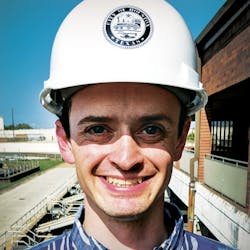Innovation’s Limitations
Bob Crossen is managing editor of WWD. Crossen can be reached at [email protected].
There is no shortage of solutions to problems in the water and wastewater treatment industry. Seemingly every time I write an article, I learn about how an existing technology I’ve written about is solving a new problem facing an operator, engineer or plant manager.
One of the bigger issues in the U.S. is aging infrastructure and how the country can repair or replace billions of dollars of failing pipe. More important is the issue of lead pipe, which continues to be a topic of national importance with pockets of intense news coverage. More often than not, these issues only are brought to light when something has gone wrong or people have gotten sick.
But the major obstacle to fixing this problem is money. It is costly to dig up and replace pipe. Even repairing small sections can be expensive, and when presented with a project for those small sections, some city councils, county boards or township boards will suggest saving to make it part of a bigger project later on. The proverbial can gets kicked down the road again.
On the other side of that coin are the innovators of new technology, who not only have to prove the voracity of their technology to their peers, but also have to get certifications and prove their tech works with end users as well. An example of this are liners for drinking water pipe.
While resins for lining pipe have been used for sewer pipe and wastewater applications in the U.S., the certification hurdle has delayed implementation for drinking water applications. That is not for lack of interest or trying to bring the technology overseas—it has been effective in the U.K.—but it does mean that sometimes innovation is faster than the market.
I have written before about the financial investment it takes from a manufacturer’s position to develop new innovations and products rather than iterations and improvements on current ones. It is costly to invest in them not only from a research and development perspective, but also from a risk assessment standpoint. That shouldn’t completely deter new ideas or innovation of new technology, but I understand that it does present limitations.
Finding a way to mitigate the limitations that we can control as an industry should also be a longterm goal, but first, let’s update some pipe.
